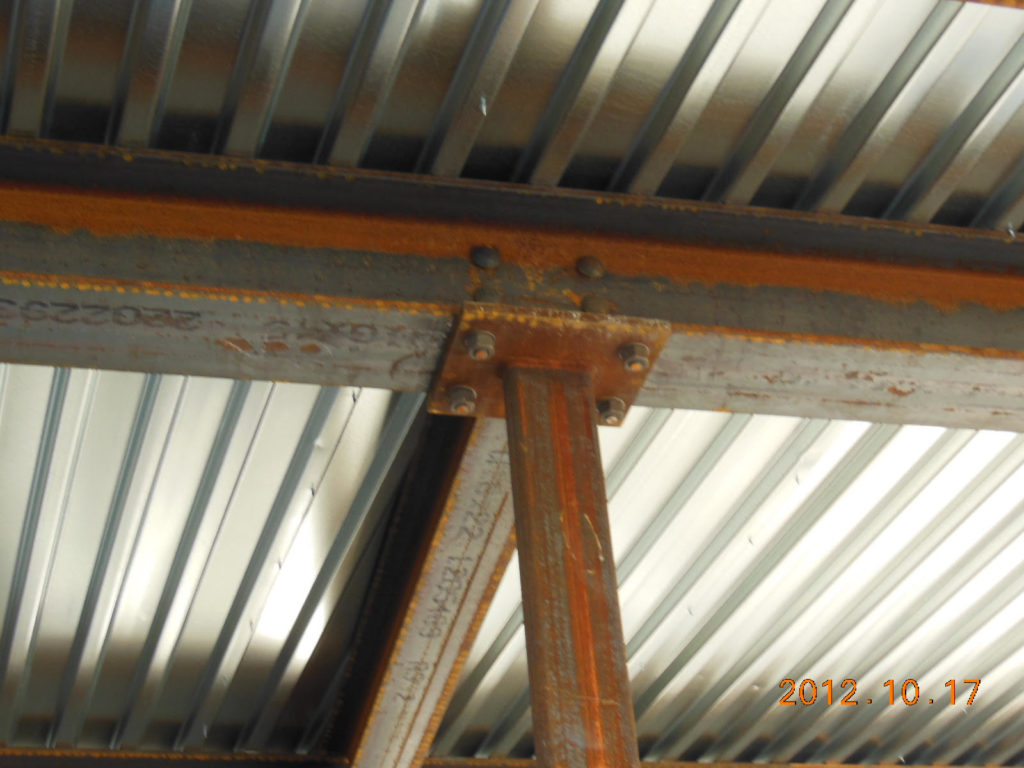Directionality Increase for Fillet Welds to HSS
By Kim Olson, PE
Technical Consultant, Steel Tube Institute
I am normally not a proponent of writing about code changes before they appear in black-and-white print. That being said, I’m breaking my rule in this article in the name of safety and education as this is a frequently posed question to our technical consultants.

The “directionality increase,” or “1.5 increase,” is specified in AISC 360-16, Section J2.4(b) (AISC, 2016), which says: “For fillet welds, the available strength is permitted to be determined accounting for a directional strength increase of (1.0 + 0.50sin1.5θ) if strain compatibility of the various weld elements is considered.”
This directionality increase is a result of research on lap splice connections where the connection is loaded in shear (Miazga and Kennedy, 1989; Lesik and Kennedy, 1990). The research confirmed that the strength of the fillet welds increased to a factor of 1.5 as the loading angle increased from 0 degrees to 90 degrees. That is to say, as the loading varied from longitudinal to the weld (factor of 1) to transverse to the weld (factor of 1.5), the capacity of the fillet weld increased.
When sizing welds to HSS, one must consider the nonuniform loading of the weld due to the flexible nature of the HSS wall being connected to. This is described as the “effective length concept.” The Commentary to Section K5 in AISC 360-16 indicates the directional strength increases should not be used in conjunction with the weld effect lengths “in truss type connections,” and this has been confirmed experimentally (Packer et al. 2016). Until now, the Specification and Commentary were silent to whether the directionality increase is permitted when connecting a plate to an HSS.

The use of the directionality increase has been called into question for HSS for several reasons. Unlike the lap splices that were the basis for the directionality increase, which were loaded in shear, welds to HSS are often loaded in tension. Since a weld can only be placed on one side of the HSS wall, fillet welds to HSS members will be subjected to a local eccentricity (Figure 1) and the HSS wall is not restrained from rotation.
A recent research project (Tousignant and Packer, 2015) studied the behavior of HSS fillet welded to rigid plates. Because of the stiffness of the plate, a fully effective weld can be designed. However, the study revealed that when comparing the experimentally obtained weld strengths to the predicted nominal strengths using the directionality increase, the factor of safety was not achieved for rectangular (including square) HSS. Conversely, if the predicted nominal weld strengths did not include a directionality increase, the minimum factor of safety was achieved. This single-sided weld effect was more severe in rectangular sections than round HSS. The study found that for round HSS, an adequate safety factor can be achieved with the inclusion of the directionality increase factor.
In the upcoming AISC 360-22, the Technical Committee on Connections has voted to further amend Section J2.4(b) to read: “The design strength, ΦRn and the allowable strength, Rn/Ω, of weld groups shall be determined as follows:
(1) For a linear weld group with a uniform leg size, loaded through the center of gravity, the available strength is permitted to be determined accounting for a directional strength increase if strain compatibility of the various weld elements is considered, using
| Fnw = 0.6 FEXX (1.0 + 0.50 sin1.5θ), ksi (MPa) | (J2-4)” |
Additionally, a new subsection (2) will be added that reads: “For fillet welds to the ends of rectangular HSS where the weld is loaded in tension, the directional strength increase is not applicable. Hence, Fnw = 0.6 FEXX”
The strength increase specified in AISC 360-16, Section J2.4(b):
References
AISC. 2016. “Specification for Structural Steel Buildings”, ANSI/AISC 360-16, American Institute of Steel Construction, Chicago, IL, USA.
Lesik, D. F. and Kennedy, D. J. 1990. “Ultimate Strength of Fillet Welded Connections Loaded in Plane”, Canadian Journal of Civil Engineering, Vol. 17, No. 1, pp. 55-67.
Miazga, G. S. and Kennedy, D. J. 1989. “Behaviour of Fillet Welds as a Function of the Angle of Loading”, Canadian Journal of Civil Engineering, Vol. 16, No. 4, pp. 583-599.
Packer, J. A., Sun, M., Tousignant, K. “Experimental Evaluation of Design Procedures for Fillet Welds to Hollow Structural Sections”, Journal of Structural Engineering, American Society of Civil Engineers, Vol 142, No. 5, pp. 1-12.
Tousignant, K. and Packer, J. A. 2017. “Numerical Investigation of Fillet Welds in HSS-To-Rigid End-Plate Connections”, Journal of Structural Engineering, American Society of Civil Engineers, Vol 143, No. 12, pp. 1-16.
September 2020
Related Article
Read an Expert Reactions to the Directionality Increase for Fillet Welds to HSS in our peer perspective article.